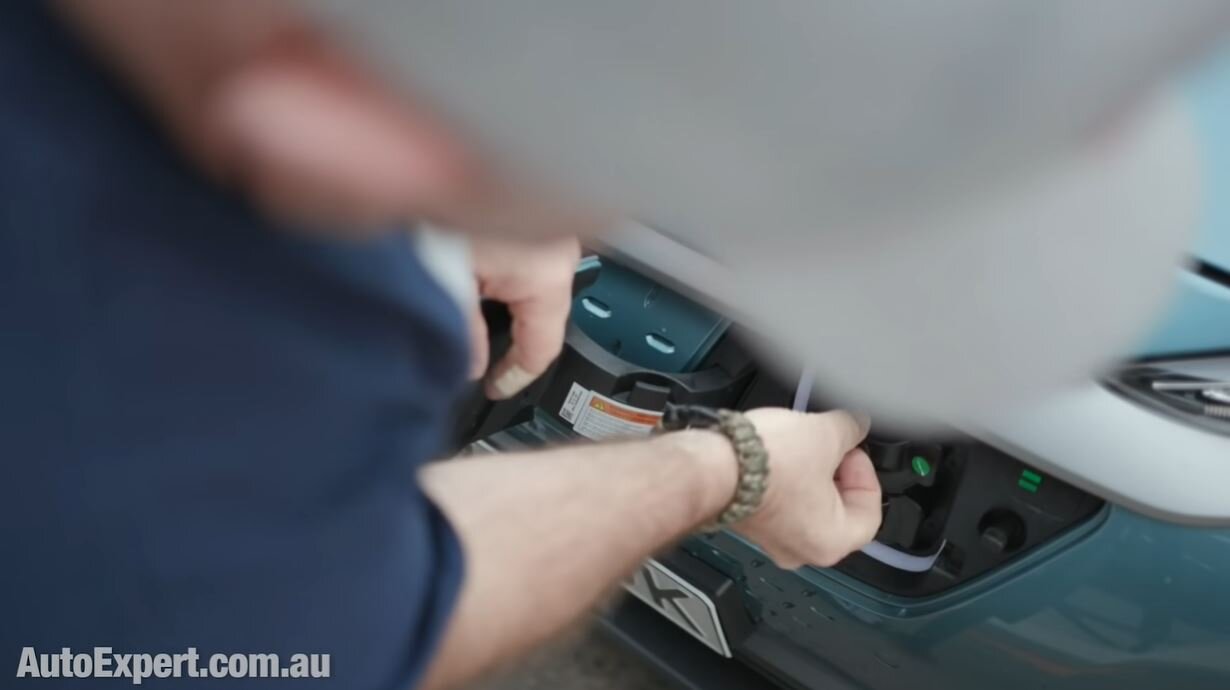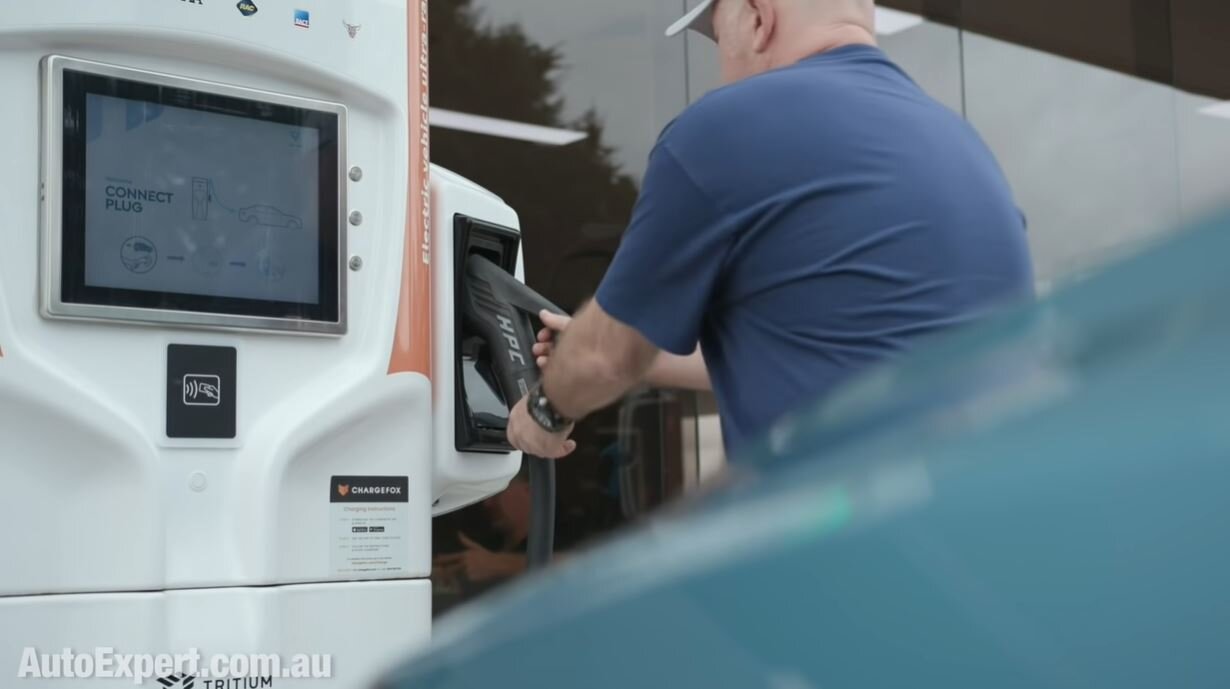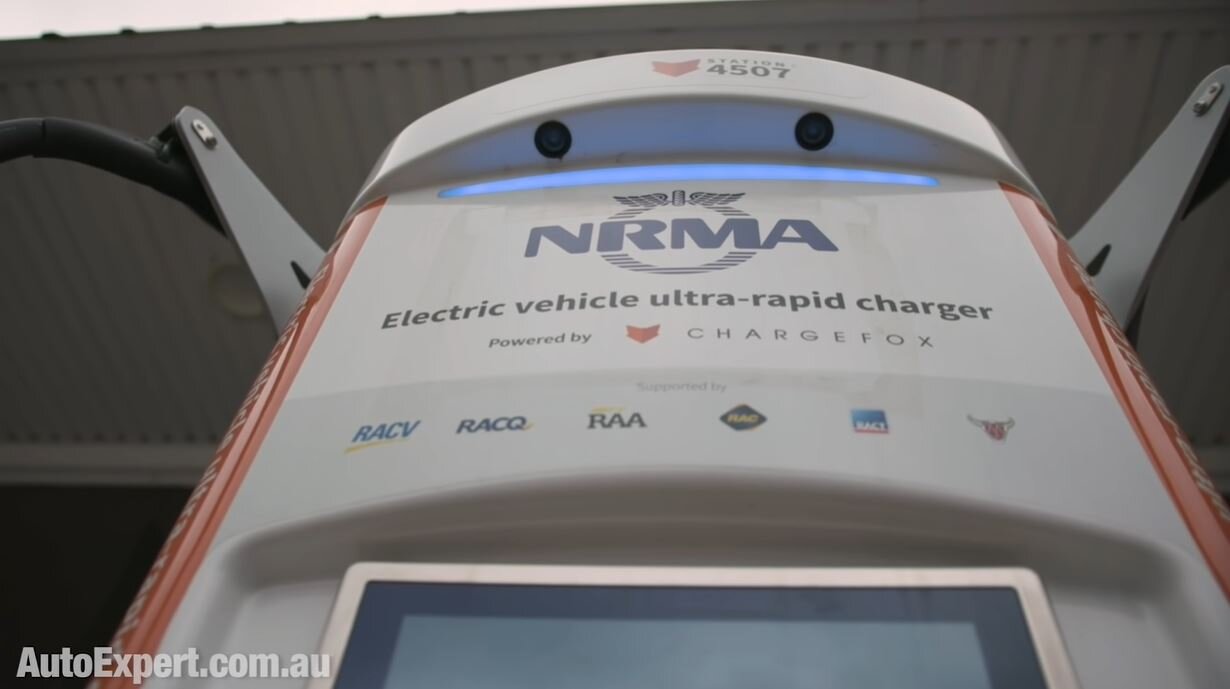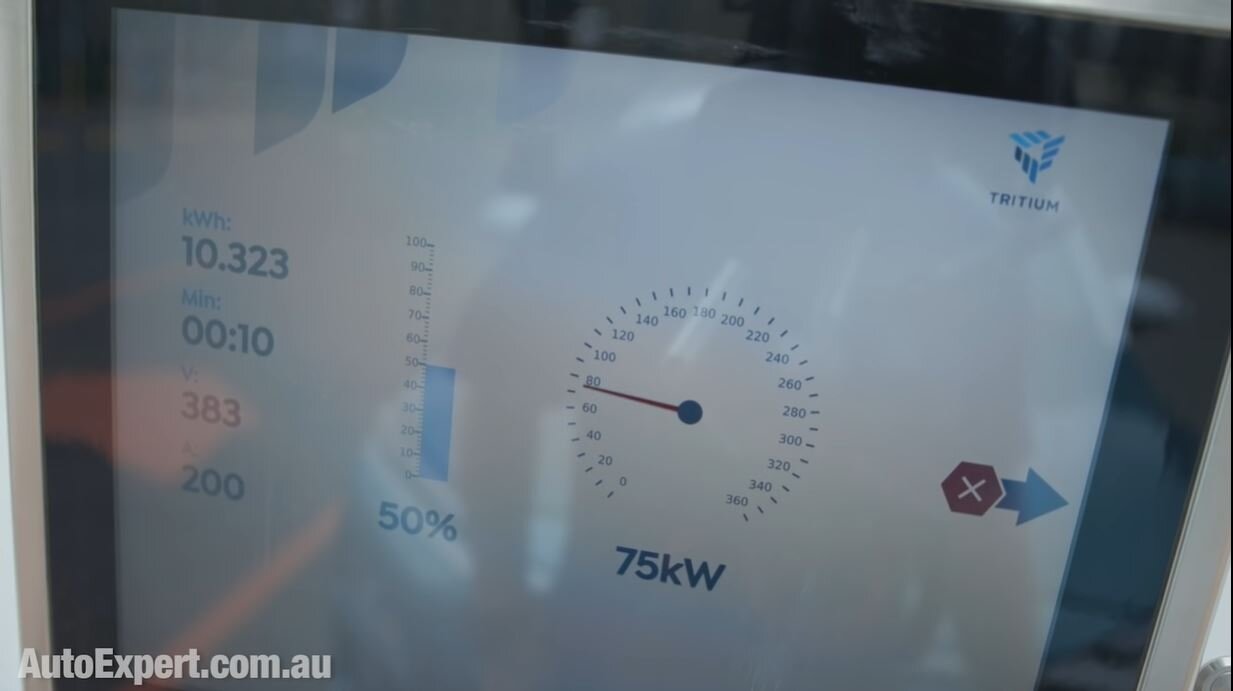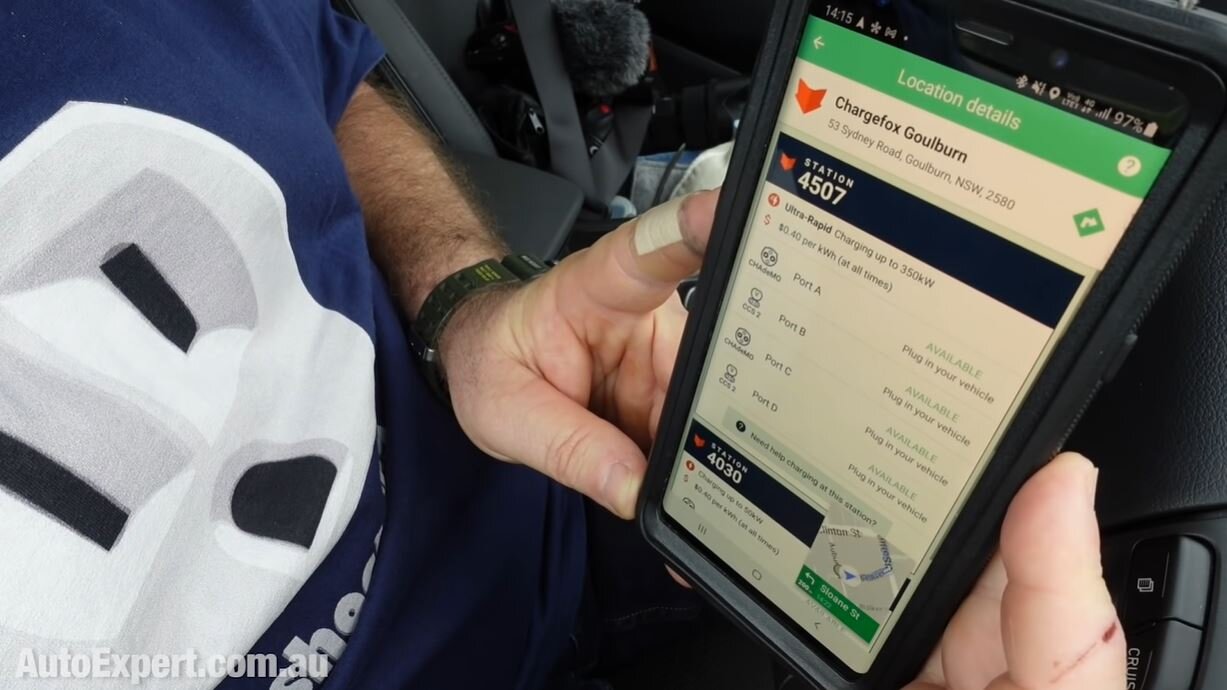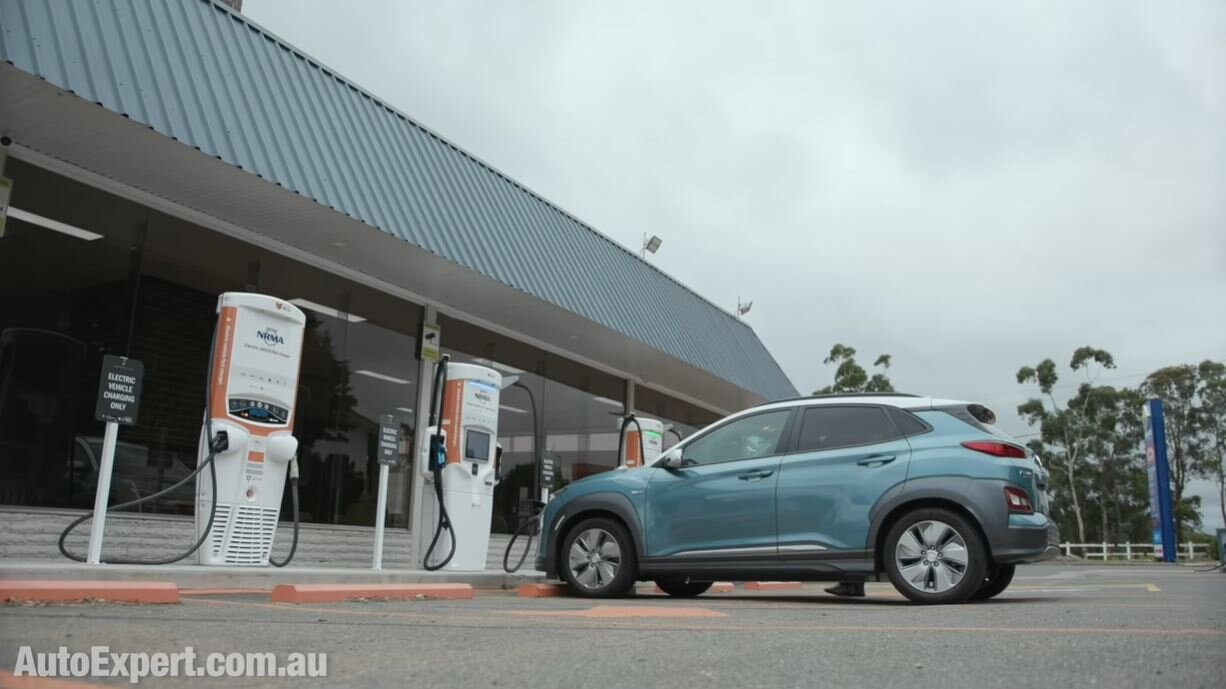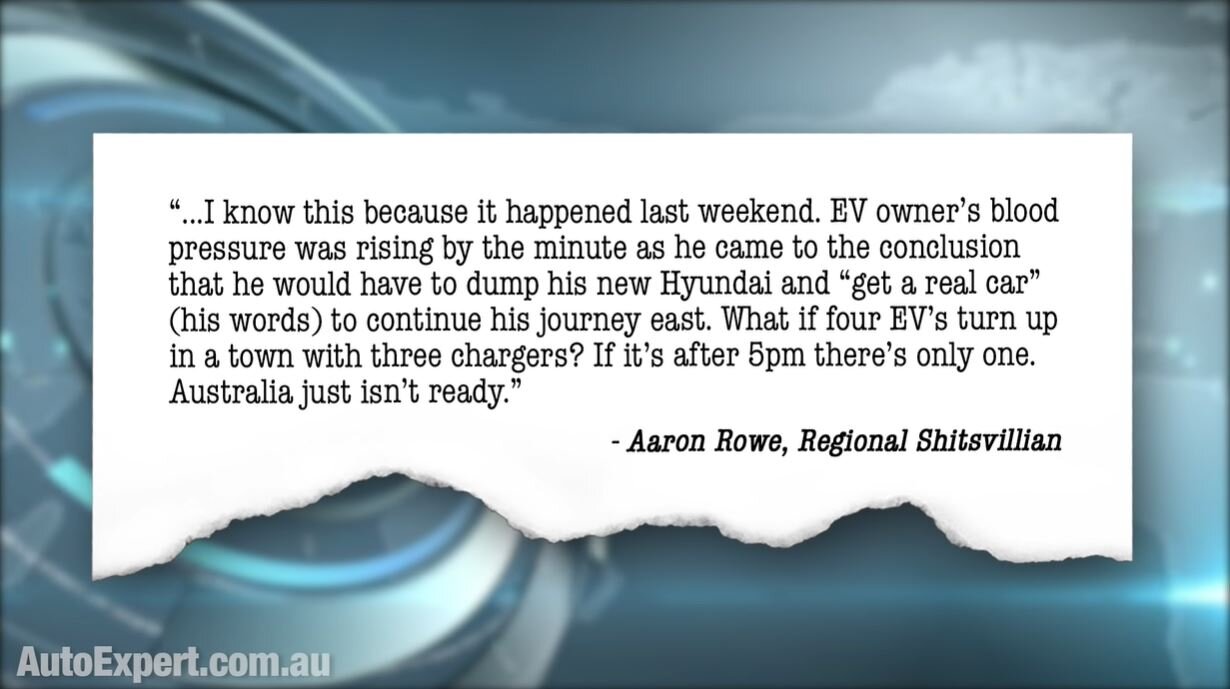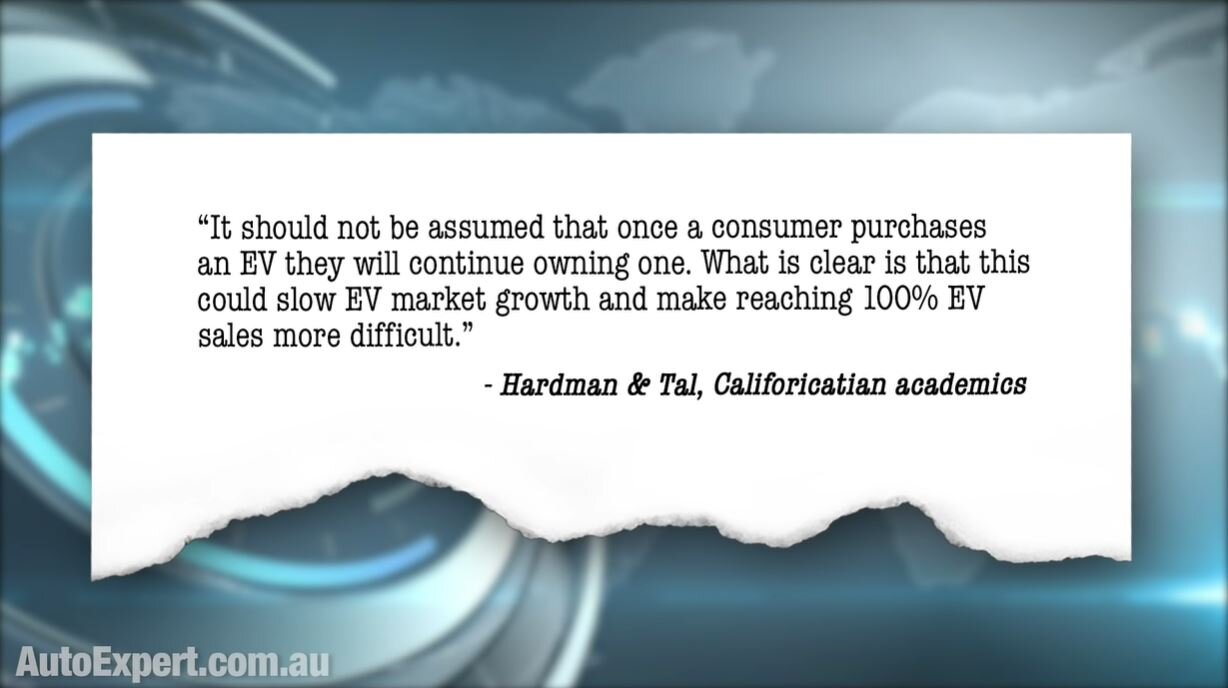The truth about EVs, long-distance driving & regional recharging
If you own an electric vehicle (or you're thinking about buying one) here's how it's going to play out for long-distance driving in Australia…
Finding the nearest charger in unfamiliar terrain is more than half the battle here - but provided you’ve got a smartphone and signal, the Chargefox app has you covered - seamlessly.
It’s actually pretty easy to find the needle when the app deletes the haystack for you.
It’ll find you the nearest charger, give you real-time information about the charger’s status - like, is it operational and/or being used by some other EV owner. And it’ll integrate with Google Maps to give you turn-by-turn instructions to get you there.
You also start the charger, stop it, and pay for the electricity within the app - no lining up with the liquid-fuel customers, no paying at the cashier and no having the two-for-one Kit-Kat diabetes meal deal inflicted upon you. So that’s nice.
Plugging in - well, they have tried to make it look as much like conventional refuelling as possible. The outlets look like fuel bowsers, and the process is pretty easy. Now, the time to recharge kinda varies, because the outlet needs to talk to the car, and not fry the battery - but you’ll get from near zero to 80 per cent charge fairly fast.
The car will make a fair bit of noise during this fast-charge process because the cooling system is doing the important task of heat exchange, keeping the battery within acceptable temperature limits.
Generally, depending on the EV, and the state of charge, you’ll be looking at a half-hour stop, ballpark. Maybe 40 minutes. Which, hypothetically, isn’t a bad way to travel. Like, 300 kilometres is going to take you roughly three hours, and by then (if you kicked off at 80 per cent) you’d be down to about 60 kays range in the Kona, and you’d stop for half an hour, be back up to 80 per cent, repeat.
You’d probably eat a burger, and let the kids burn off a bit of latent energy. Show them the Supermax, and tell them graphic stories about what will happen if they don’t pay attention in science and maths classes. Like, be a responsible parent. For once. Dude.
To me, that’s not much of an imposition, logistically, for most people. And I’d have to say, as a Chargefox virgin, I found the whole process pretty simple, and totally reliable. Even gentle and intuitive. I just went with the flow. Like, a politician could do this. (Not a cabinet minister, obviously, but a hard-working back-bencher? Sure. It’s that easy.)
Chargefox isn’t getting anything out of this review, either - they did offer to pay for the electrons, when I sought filming permission at their location in Goulburn, but I declined. (It was, like, less than $20 worth of electricity.) They’re not getting any input into this review.
I was just another customer, albeit with a fairly big camera. In my estimation, they’ve got a good system, which works well. You need to download the app, register and input a credit card number so you can pay for your recharging. It’s pretty simple.
According to the app, which has a map showing every charger nationally, you can basically drive from Port Douglas up north to Adelaide down there, using the Chargefox network. But you can’t go any way you want. You essentially have to follow the coast.
Sydney to Brisbane: no problem, just not via the New England Highway. Gotta go via the coast. Rechargers at Port Macquarie, Coffs Harbour, Ballina, Byron - then wherever you want, north of that.
Sydney to Melbourne on the Hume: no prob. Canberra? Yep. Also Cooma and Batemans Bay. Melbourne to Adelaide - OK. But essentially nothing in regional NSW and regional Queensland - away from the coast. It’s still an EV desert on the road to Dingo Piss Creek in an EV.
Even the Blue Mountains is a recharging desert, and as for Bathurst, Dubbo, Cobar, Broken Hill - I’m hearing crickets.
A REALITY HIT ON EVs (Warning: Contains facts)
Why Victoria's EV subsidies are such an insult >>
Mercedes green lights new EQA EV for Australia (plus nuts!) >>
Volkswagen versus Australia on emissions and EVs >>
Hyundai begins world’s most expensive electric vehicle recall (US$900M) >>
Scott Morrison, the car industry and the ‘zero emissions’ lie >>
Cobalt Blues: Mythbusting your comments about cobalt in EV batteries and fuel >>
My AutoExpert AFFORDABLE ROADSIDE ASSISTANCE PACKAGE
If you’re sick of paying through the neck for roadside assistance I’ve teamed up with 24/7 to offer AutoExpert readers nationwide roadside assistance from just $69 annually, plus there’s NO JOINING FEE
Full details here >>
West Coast charging
Token rechargers are around Perth and down to the Margaret River. You can even charge up in Kalgoorlie, but to get there in the Kona you’d need to go via Albany and Esperance. Which is kinda the long way round, and when you get there, it’s just a big hole in the ground and endless ‘entertainment venues’.
So, here’s the problem (aside from Australia being a cultural wasteland): if you are in a place without a charger and you need to plug in to a conventional wall outlet using the charger that came with your EV, book a room. Ditto, if the only charger near you suddenly goes poopy in its trousers.
An EV like the Kona has a 64 kilowatt-hour battery. It’ll take you roughly 450 kays. That’s about seven kilometres per kilowatt-hour of electrical energy.
And a wall outlet delivers about 2.4 kilowatt hours for every hour you plug it in. So that’s about 17 kays of range. Per hour of charge time. On a standard wall outlet. If it’s 100 kays to the next charger, that’ll be six hours, thanks very much.
Hypothetically, if you needed to get from Narromine in NSW, to the nearest Chargefox charger, which appears to be in Gundagai, a distance of 350-odd kays, and you’re sucking on a dry tank (of electrons) in Narromine: this four-ish hour drive would require about 20 hours connected to a conventional wall outlet.
More than enough time, I’d suggest, to read the shortest book on earth: Things to see and do in Narromine. Twice.
This is not the only kind of thing that can ruin your regional EV travel aspirations. Aaron Rowe - himself a battle-hardened regional Australian, explains:
Indeed - what if six Hilux-owning housos en-route to Dingo Piss Creek have encircled Bogan Gate’s only EV charger and are looking for some planet-saving hipster vegan and his mates to star in their remake of the 1972 John Boorman cult classic, Deliverance?
“I say, my good man, would you mind moving your dangerously overloaded, ridiculously raised and otherwise ill-conceived wanking chariot so that my chaps and I might plug in and continue on our own merry odyssey? Perhaps I might procure you all a round of herbal tea for your trouble? Are those actually dead animals, hanging from the rear of your vehicles?
-Prospective EV Owner, might say
What I’m suggesting is: Recharging your EV could be culturally and logistically challenging, at times. More so, the further you are from a big city. And the logistics could simply be compromised by the only charger for hundreds of kays being down for repairs. You probably won’t get to star in a Deliverance remake - but there could well be cultural challenges and a general lack of sympathy for your plight, best-case scenario.
BUYING AN EV OR HYBRID?
2021 BMW 330e plug-in hybrid: the definitive review and buyer's guide >>
Answering your electric vehicle questions (after 10,000km in a Kona EV) >>
12 things I've learned after driving an electric car 9000km >>
California - the haven for EVs
I’ll leave you with this. California, which has America’s highest density of left-leaning beautiful people, and which has embraced clean air, EVs, Arnold Swarzenegger and other green agendas harder than most of the rest of America, has found that one in five EV owners do not back up for a second EV at trade-in time.
They switched back to gas, as they say over there. One in five. That’s according to University of Californication researchers Scott Hardman and Gil Tal. They surveyed Californians who bought an EV between 2012 and 2018.
One in five went back to gas because plugging in was too much hassle - essentially. They found charging at home on America’s standard 110 volt electricity to be torturously slow, and they also curiously shunned public charging stations. Nobody knows why. Is public charging roughly considered anti-social or somehow insulting?
Personally, I loved driving that Kona Electric. It grew on me more than I thought it would. I even tried hating myself for loving it, and even that failed.
Once I had a single-phase 32-amp charger installed at home, recharging was a breeze. You just slept on it. It was infinitely better than going to what an American would call a ‘gas station’.
Admittedly this was during a pandemic, where I travelled very little - especially longer trips. And I did also have two dirty hulking diesels in the driveway the whole time.
When I finally popped my regional EV-driving cherry, the system was quite gentle with me, and I drove home beyond satisfied. I was glad I had finally done it. Borderline bliss would not be an understatement. It flipped a switch inside me, oddly.
How about you, dude - are you an EV owner? And if you are, what’s your experience of regional travel? Happy or sad? Let me know in the comments. I recently reviewed the BMW 330e - and it seemed to bridge the regional travel gap far more practically - at least for now.
Tell me: are you gunna go again, with another EV, at trade-in time? I’ve climbed all over the Hyundai Ioniq 5 EV - it’s like the Kona Electric on steroids, so a lot of improvement there. It’s a pretty compelling ‘upgrade’ case, right there. But is the Carlifornian experience likely to apply to Australia?
If you’re an EV owner, currently, will you ‘go back to gas’ like 20 per cent of Californians EV owners? If so, why? Will you go back to gas because the regional charging infrastructure is poor? Tell me in the comments below.



